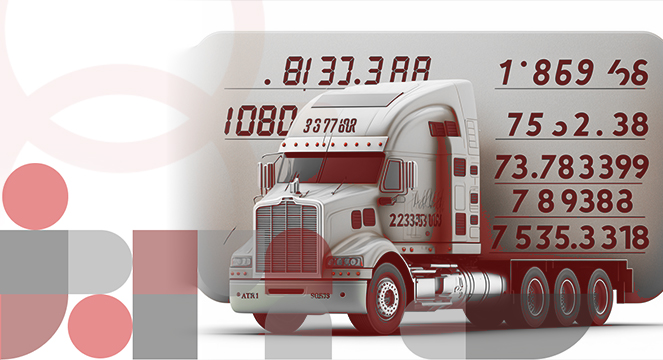How to calculate trucking rates?

The domestic freight and trucking markets are unstable, as many number of logistics and trucking experts will attest. Truck rates can vary wildly, even between carriers that operate on the same lanes. Seriously.
It might become more challenging. Due to a number of hidden fees that are frequently covered in the fine print, the more confusing a carrier is, the more you might end up paying.
These hidden extra costs raise your shipping costs, but they also have an immediate impact on your customers if your goods are delayed. In other words, finding a reliable third-party logistics company that won’t overcharge and underdeliver becomes kind of a big deal, as is having up-to-date, accurate market information, including benchmarked freight rates.
Let’s break down the essential information about trucking rates.
Reasons Why Trucking Rates Matter
It all comes down to supply and demand, just like people who missed buying a ticket still want to see the game so they are willing to pay more.
Given the frequent changes that take place, such as unanticipated interference, snowstorms, changes to scheduled programs, Super Bowl traffic, or general delays, it is the responsibility of trucking companies to ensure that deliveries, whether long distance or local, happen on time.
And, like everything else, that it occurs at the appropriate cost.
Trucking Rates Calculation
If you don’t have enough knowledge of the important factors – distance your shipping, size of goods, urgency, temperature sensitivity, and classification (more on that soon), you’ll end up comparing apples and oranges on your per-mile trucking rate.
Shipping cross-border goods without thinking about the additional costs is like driving with your eyes closed.
Enjoy seamless cross-border shipping
Book a free consultation with a Fr8App cross-border Expert and optimize your results today.
How to Calculate Truck Shipping Rates
To be the most informed customer, it’s critical to understand the factors that influence trucking rates for shipments.
Given that the average trucking company has between one and two trucks—yes, there are many small businesses, which results in a very wide range of prices—this is especially crucial.
1. The shipment’s weight
As a shipment’s weight increases and approaches the minimum load weight of the next weight category, it will be rated in the next category as having a low weight for that category, which will affect the cost estimate for that category.
The freight weight is one of the major factors that affects the cost estimate of any shipments; the more a shipment weighs, the lower the charge per hundred dollars (but the higher total cost, of course).
2. Shipment Density
The weight of any trucking shipment can be divided by the total cubic feet of the shipment to determine the shipment’s density.
For palletized shipments, the dimension the good fits on is used in addition to the weight of the shipment to determine the shipment’s density.
The density or thickness of the shipment is another factor used in determining trucking rates. The density of the shipment is typically calculated accurately describes the goods being shipped in the Bill of Lading.
3. Freight Classification
Each trucking shipment has a unique classification that affects the overall trucking rate. In the United States, the National Motor Traffic Association (NMFA) records these classifications for less-than-truckload (LTL) and full-truckload (FTL) freight in the National Motor Freight Classification (NMFC) book.
4. Distance of Travel
Usually, the longer the distance that must be traveled during delivery, the more expensive shipping will be.
Knowing the fundamental terms
Beyond pricing, you’ll also need to make sure you know the lingo when dealing with shipping trucking companies and carriers. Here are some of the most common terms that you’ll come across when calculating truck freightquotes.
- Consignor: An individual or trucking shipping company that sends the freight to the consignee.
- Consignee: An individual or trucking shipping company who gets the freight from the consignor.
- Carrier: A firm that offers shipping services.
- Third-Party logistics (3PL): Third-party logistics in logistics and supply chain management is an organization’s use of third-party businesses to outsource elements of its distribution, warehousing, and fulfillment services.
- Bill of Lading: this can also be referred to as freight bill, B/L or BoL, the freight bill-of-landing is a record of the agreement between the carriers and the shippers for the freight shipping services being offered.
- Loss and Damage: Loss and damage rates only cover freight shipments on transit or in storage for a short period in a facility owned and operated by the carrier.
- Full Truckload (FTL): A shipment that requires the use of a whole truck for shipments.
- Less Than Truckload (LTL): Shipments that don’t need to utilize the full capacity of a truck.
- Drayage: This refers specifically to the movement of containers and trailers to and from seaports and railroads through trucking method only.
- Pallets (or Skids): stacking platforms that normally measure around 40″ by 48″.
- SKU: Stock Keeping Unit, a detailed report of a different kind, size, or freight.
- CWT: A typical shipping weight unit equivalent to 100 pounds.
It’s important to get a full trucking freight quote before you proceed with a carrier. If you’re having trouble understanding the hidden charges in your shipping fees, it’s best to hire experts to help you calculate it.
Discover exciting stories and get insights from logistics experts.
Join the ultimate Fr8App Insights mailing feed.
